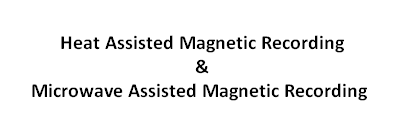Higher hard disk drive density means people can store more data on a single disk. The main focus of the 29th Magnetic Recording Conference is higher capacity per drive. The disk capacity and density is closely related to disk users, so I think you all need to take a glance at the following content.
The 29th Magnetic Recording Conference
Put on by IEEE (Institute of Electrical and Electronics Engineers) Magnetics Society, the 29th Magnetic Recording Conference (TMRC) was held on August 8-10, 2018, at the Western Digital Milpitas Campus. This conference’s theme is higher hard disk drive density: “novel materials, devices and technologies for magnetic data storage and advanced applications”.
Four aspects are involved in this conference:
- Heat Assisted Magnetic Recording (HAMR) system
- Microwave Assisted Magnetic Recording (MAMR)
- Magnetic Random Access Memory (MRAM) devices
- Glass media and helium disk substrate

The use of helium and even vacuum in the hard disk drives are also discussed. What’s more, the IEEE’s focus is still putting on how to put more disks in Hard Disk Drives (HDDs) by virtue of glass media, to gain higher capacity per drive.
Actually, the hard disk drive density is closely related to track width, coercivity, modulation method, and magnetic field direction.
How to Achieve Higher Hard Disk Drive Density
HAMR and MAMR
There is an obvious reduction in the magnetic spacing, which results in a higher linear density on the track of hard disk drive (high track density).
Benefits of the magnetic spacing reduction:
- The conventional perpendicular magnetic recording (PMR) has a capacity increase for more than thirty-five percent. This is beneficial for both HAMR and MAMR recording.
- The idle power consumption is reduced by fifty percent.

What’s even more exciting? A new kind of read and write head actuator is introduced to record (and read) from more of the HDD surface; this further improving the recording density.
Talks about modeling and some experimental work on MAMR exist, but none of them could be the evidence to prove that MAMR’s laboratory demonstrations have advantages in terms of areal density.
That’s how a 3D recording capability is added to HDDs and how magnetic recording density is increased.
Top Recommendation:
If your HDD crashes suddenly, you should get started to recover data from it ASAP!
MRAM
In the TMRC conference, the performance of the magnetic random-access memory (MRAM) devices is also discussed. It is said that the spin tunnel torque (STT) MRAM was applied to the products which is believed to be the most promising ones. Besides, the MRAM is suitable for both embedded and standalone memory applications lately.

Technologies like Spin Orbit Torque (SOT) and Anomalous Hall Effect (AHE) are able to improve the performance of MRAM devices, making it comparable with the performance of high speed SRAM.
Moving from two terminals to three terminals, these devices occupy a footprint which is larger than that of the current STT MRAM. Apart from that, studies of twin spin torque oscillators are even started to further improve the performance.
Glass, Helium and Vacuum
Creating HDDs with high capacity for hyperscale and other data center applications is the main focus of the technology to promote in HDD recording. The 3.5-inch form factor and aluminum disk substrates are commonly seen in near-line drives. Often, the 14 TB of disk storage capacity can be provided by 8 to 9 disks together.
Different hard disk drive optimization for air filled HDDs vs. those filled with helium and adjacent track interference (ATI) vs. track mis-registration (TMR), in particular, can be found after analysis. You know what, both of them are important parameters to achieve high track density.
Peter Goglia is from HDD start-up L2, and his talk covers the following things:
- Replace air with helium.
- The potential benefits of having HDDs containing a vacuum.
- How to remove gas from hard drive.
He finally said that the disk lubricant and the carbon overcoat on the magnetic head & the disk are discovered to be eliminable.
User Comments :